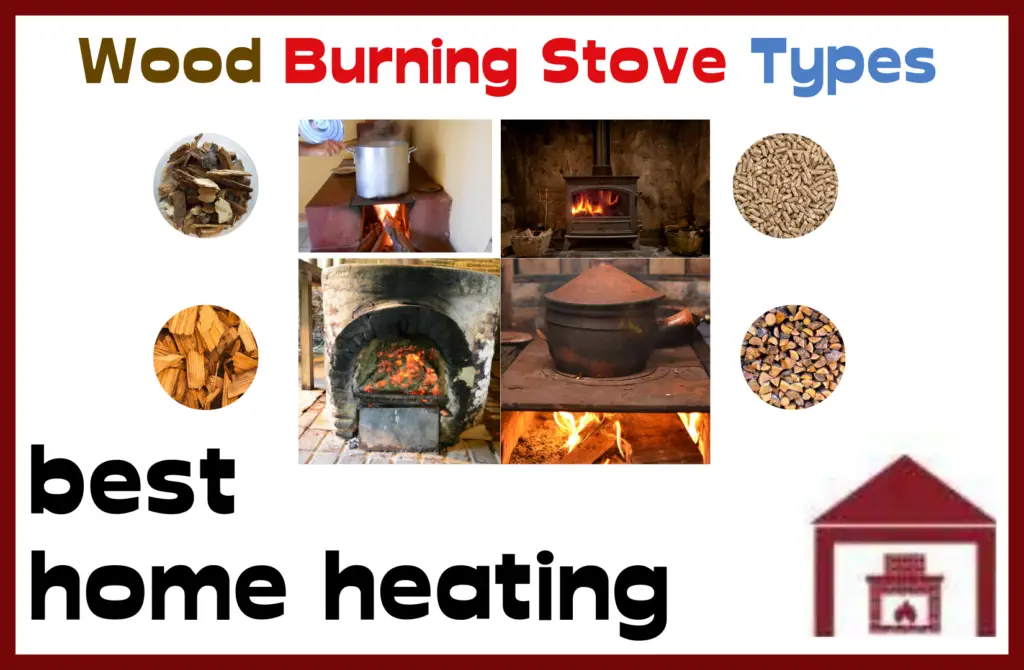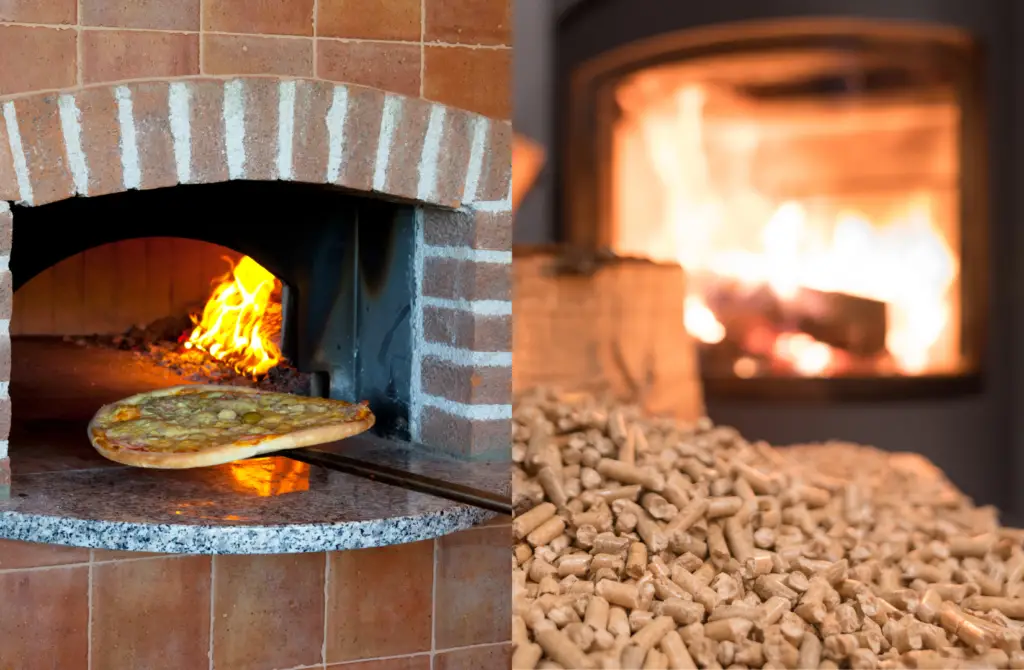Wood-burning stoves, existing since the 1500s, have undergone significant advancements in recent decades, and understanding the various types can aid in selecting the ideal stove.
Wood-burning stoves come in steel, cast iron, or soapstone, with multiple models and sizes, but primarily two types: catalytic (highly efficient) and non-catalytic (emit slightly more smoke, cost less, need less maintenance).
Continue reading to find out more about the various Types of Wood-Burning Stoves and uncover more valuable information.

What are the different types of wood-burning stoves?
Wood-burning stoves come in two types: catalytic and non-catalytic. The main difference between the two types of stoves lies in their heat output and required maintenance levels.
In terms of their efficiency and emissions, both catalytic and non-catalytic stoves are better than old stoves, the sales and installations of which are regulated both in the UK and the USA.
1. Catalytic wood stoves
What makes a catalytic stove highly efficient is a honeycomb-shaped ceramic component, which is a combustor. Once the stove temperature has reached 500°F, the catalytic combustor gets activated and reburns the smoke and gasses inside the stove. Thus, the stove generates more heat while producing fewer emissions.
However, the honeycomb-shaped catalytic combustor needs regular cleaning and maintenance, and replacement after about every six seasons. It is important to be careful when handling and cleaning a catalytic combustor. If you rub it harshly with something coarse, you can end up damaging the ceramic substrate and thus making the component ineffective.
When used and maintained correctly, a catalytic wood-burning stove is more efficient than a non-catalytic stove, in part because the former reburns the smoke before it escapes through the chimney.
2. Non-catalytic wood-stoves
Instead of a honeycomb-shaped component, a non-catalytic wood stove has a reburn system composed of rod-like components that do not require frequent cleaning and maintenance. A typical non-catalytic wood-stove is less expensive than a catalytic stove.
A non-catalytic stove has a less sophisticated way to burn smoke and therefore emits slightly more smoke than a catalytic version does. However, non-catalytic stoves do require occasional maintenance, and the internal parts also need to be replaced over time.
Both catalytic and non-catalytic wood stoves meet the emissions standards set by the Environmental Protection Agency in the USA and the UK Government’s Environment Agency.
Types of wood-burning stoves based on the materials
There are three materials that are widely used to manufacture modern wood-burning stoves: steel, cast iron, and soapstone. So, in terms of the materials, wood stoves can be categorized into three types:
1. Steel wood stoves
High-grade steel is bolted or welded together to make these stoves. Steel wood stoves are usually minimalistic in design and black in color.
They are relatively less expensive than fancy wood stoves, and they heat up and cool down quickly. Unless you load wood steadily, heat can fluctuate pretty quickly.
If you choose a steel wood stove, consider investing in a heavy-duty unit, which can last more than a decade. Stoves made of thinner materials are less durable. If you are picky about the design of the stove, a steel stove may not be the right choice for you.
2. Cast iron wood stoves
These are the most widely available wood-burning stoves. They are known for their ability to retain heat for long periods, but they also take longer to heat up.
Cast iron stoves are remarkably durable. They are characterized by rustic looks and ornate styles. To add to their decorative flair, some cast iron wood-burning stoves come in enameled colors.
Thanks to its high capacity for retaining heat, a cast iron wood stove releases residual heat for long periods of time. The stove can keep your room warm even after the fire has died down.
3. Soapstone wood stoves
Built with thick soapstone slabs, soapstone wood stoves are known for their relatively high efficiency as well as high price tags. Soapstone is not a metal but has a high capacity for retaining heat.
While soapstone wood stoves have the same burn technology as steel and cast iron stoves, many homeowners lean towards soapstone stoves for their aesthetic appeal. A soapstone stove serves as a fine piece of furniture.

Is a bigger wood stove better?
No. When choosing a wood-burning stove, one consideration is crucial, and that is the area that needs to be heated with the stove. If you are not careful with your numbers, it’s easy to end up buying a stove that’s too big for your space.
Let’s see why it’s important to choose a right sized stove. With a wood stove, you can control both the amount of air supplied to the fire and the amount of wood needed to maintain the fire, right? Then why should you care so much about the size of the stove?
If you are using too large a stove, you will tend to run your stove at a suboptimal temperature, and smoldering fires burn inefficiently and in some cases can cause a smell. In a catalytic wood-burning stove, the honeycomb-shaped ceramic component is useless until the stove has a temperature of 500°F.
The heat output of wood burning stoves is measured in kW. Stoves measuring 4-6 kW are small, 7-9 kW are medium, and 10-15 kW are large. There is a calculation that can help you choose the right sized one.
Find the cubic space of the room and divide the number by 14. For example, a room measures 8m long, 6 m wide and 2.5 m high. You can find the cubic space of the room by multiplying these three figures: 8x6x2.5= 120 cubic metres. Now divide 120 with 14 and you find 8.57. In such a case, you should probably go with a 7-9 kW wood stove.
What is the difference between a fireplace and a wood-burning stove?
While a wood-burning fireplace and a wood-burning stove serve the same purpose, they differ in the way they are constructed.
Typically made of brick or stone, a traditional fireplace is used to keep living spaces warm and cozy. It is attached to a chimney that vents the smoke.
Although fireplaces have been around for about a millennium, using a fireplace is not an efficient way to heat a home. A typical wood-burning fireplace is about 10% efficient, which means about 90% of the wood is not turned into heat energy. It’s also bad for the environment.
A wood-burning stove, in contrast, is a freestanding appliance used to heat living spaces. Wood-burning stoves have been around for several hundred years, and seen remarkable developments in the last few decades.
Modern wood-burning stoves are characterized by their compact designs and high efficiency. An EcoDesign stove has a minimum energy efficiency of 90%. They are also safer than fireplaces.
Conclusion
Wood-burning stoves are made of steel, cast iron and soapstone, and any modern wood burning stove is either catalytic or non-catalytic. While catalytic stoves are highly efficient, they require more frequent maintenance. Non-catalytic stoves, in contrast, are slightly less efficient and need less frequent maintenance.
Whether you choose a catalytic or non-catalytic wood stove, make sure it is rightly sized for your space. Choose the right stove and get the best out of the appliance.
